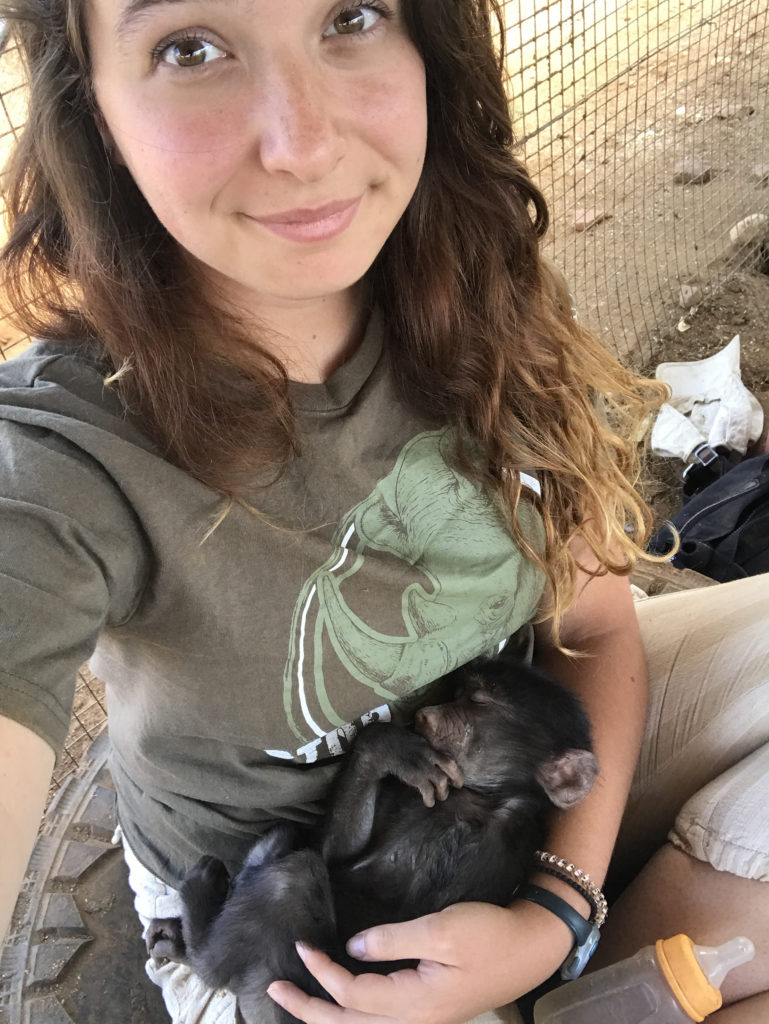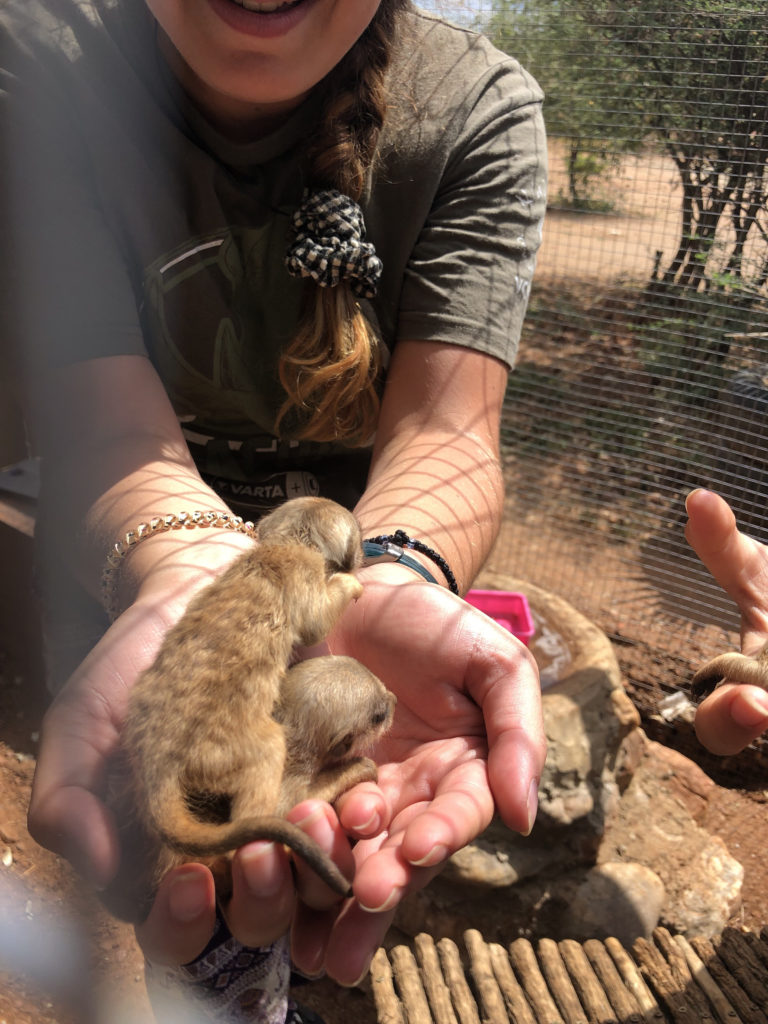Third year Julie Dobkin is spending her days hand-feeding habituated cheetahs and tracking wild elephants. It’s not the first place you’d expect to find a cell and molecular biology major, but it’s the exact co-op experience she was looking for.
That’s because the co-op program is built for flexibility. Knowing she had up to three chances for co-op, Dobkin went on something of a co-op safari, exploring both potential career paths while also embracing lifelong interests.

Julie Dobkin pictured “babysitting” Philly, a baby orphaned baboon who is being hand raised on the sanctuary. Photo courtesy of Julie Dobkin
After having completed her first co-op on the structural and chemical biology team at Celgene Inc. in 2018, she felt ready for a different kind of challenge. That led her to the N/a’ankuse Wildlife Sanctuary in Windhoek, Namibia.
“I decided to apply to this co-op as an opportunity to do work that I am incredibly passionate about — wildlife conservation and research — but don’t anticipate having the opportunity to participate in later on” she said.
Her journey to “cheetah country,” started with an expansive job search. After researching positions across Asia, Africa, and Australia, she applied to N/a’ankuse, noting the “wide variety of animals,” as well as the chance for “hands-on experiences” with the wildlife.
With over 100 animals across their facilities, Dobkin wasn’t exaggerating.
Her work week varies, depending on needs. From observational research to perimeter integrity checks, volunteers such as herself play a critical role in the care and protection of these animals.
In most instances, she gets to work one-on-one with unique breeds across the animal kingdom. Other days involve tracking movements of game species across a large swath of preservation land.

Dobkin holding 3 week old meerkats, as volunteers attend to cleaning the enclosure, in addition to checking the babies’ weights. Photo courtesy of Julie Dobkin
There’s also quite a bit of upkeep. With such a variety of animals living together, feeding times for large carnivores like lions or african wild dogs can present unique challenges. Then there are those in need special attention, like the orphaned baby baboons, who since birth have only known the care of humans.
It’s a lot to take on and supervise, but this great responsibility has also led to some incredible moments.
In addition to maintaining the reserve, Dobkin gets to travel to N/a’ankuse research sites around Namibia. There, she recalls catching a glimpse of a newborn zebra while searching for game species on horseback. On another day, she mentions the thrill of hiking one of the oldest sand dunes in the world.
Still, the most rewarding part of her co-op was the feeling of creating real change. “My favorite part was working with people from all over the world — and getting to see the results of my contribution to the efforts being made by the N/a’ankuse wildlife sanctuary.”

